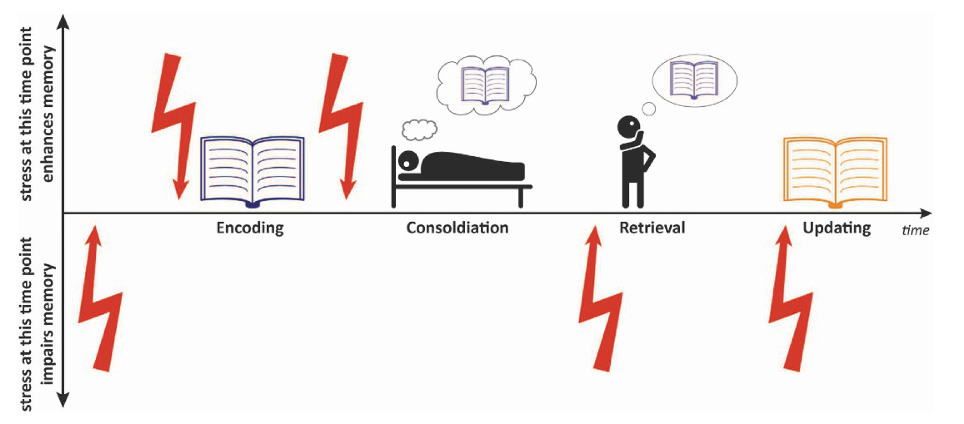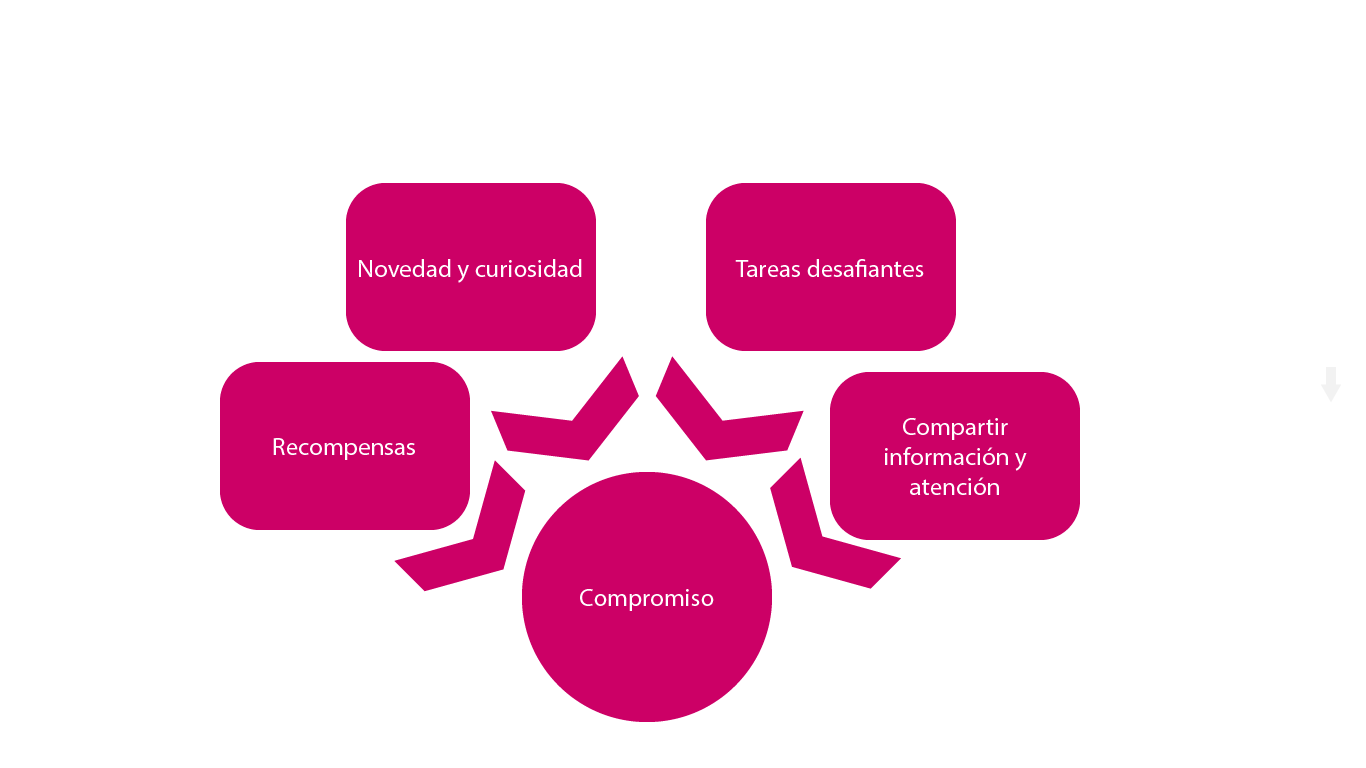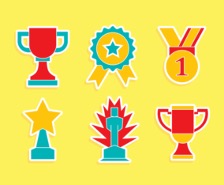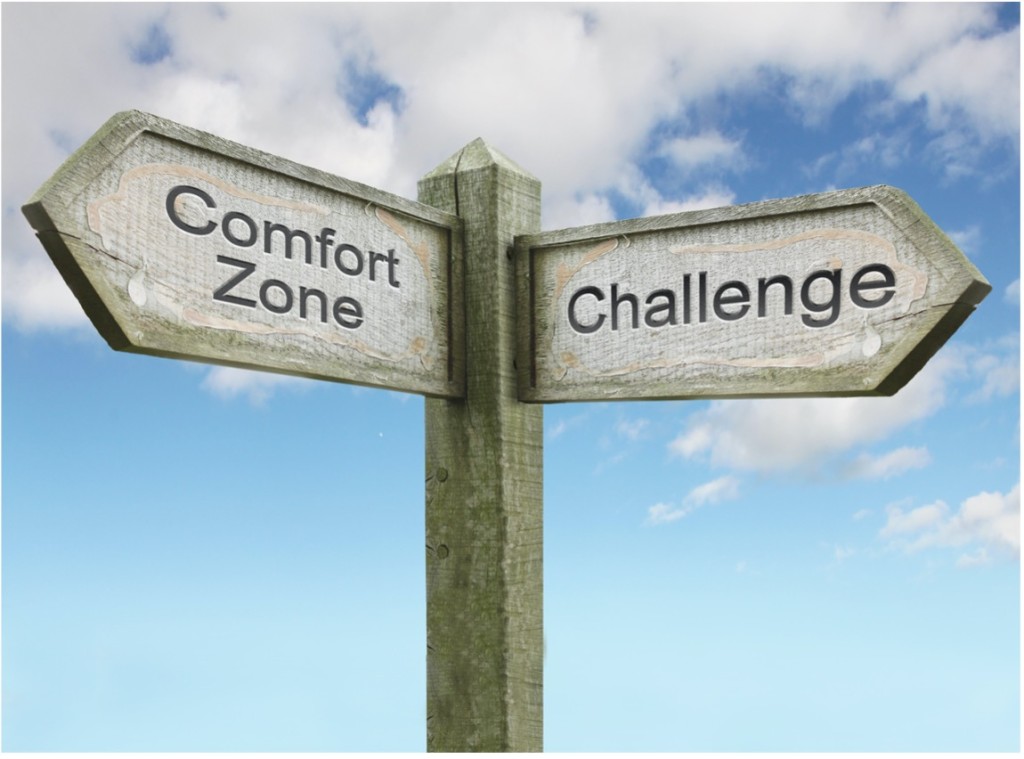In education, rewards such as points, praise, badges, smileys, etc., are commonly used as positive reinforcement strategies to promote learning (Dufrene, Lestremau & Zoder-Martell 2014; Wehby & Copeland 2000). However, the effects and benefits of these social rewards on learning have been called into question by several educational researchers (Deci, Koestner & Ryan 1999). More recently, neuroscience studies (Farooqi et al. 2007; Izuma, Saito & Sadato 2008; Howard-Jones, Jay, Mason & Jones 2016; Schultz 2016) have shown that social rewards have a similar effect on the brain as material rewards such as receiving money or eating your favourite food. Both types of rewards – and even the expectation of the reward – influence the release of the neurotransmitter dopamine
Estrategias que activan el sistema de recompensas y el compromiso
Existe una amplia gama de estrategias que los docentes utilizan habitualmente para involucrar a sus alumnos en este sentido (Guilloteaux & Duornyei, 2008). Muy pocas de estas estrategias han sido objeto de investigación científica enfocada en términos de sus procesos neurocognitivos subyacentes.
– Howard-Jones et al. (2020:450)
This section discusses four research-based strategies that can influence the brain’s reward system and engage students in learning (Howard-Jones et al., 2020:449-452). These four strategies are:
Recuerda que diferentes estudiantes reaccionarán de manera diferente a estas estrategias. Por lo tanto, es importante experimentar y determinar qué técnicas pueden producir una respuesta de enfoque en el alumnado.
recompensas
Las neuronas responsables de la liberación de dopamina se encuentran en el Área Tegmental Ventral, una región del tronco encefálico, y proyectan sus axones a una amplia gama de estructuras cerebrales, como el núcleo accumbens, la corteza prefrontal y el hipocampo. La liberación de dopamina mejora la experiencia de aprendizaje de tres maneras:
- La dopamina activa el sistema de recompensa a través de la vía mesolímbica, haciéndonos más ansiosos por participar en la oportunidad de aprendizaje y motivándonos a trabajar duro para obtener la recompensa.
- La dopamina aumenta la actividad neuronal en la corteza prefrontal a través de la vía mesocortical. Los estímulos gratificantes atraen y centran la atención de las personas.
- La dopamina también parece desempeñar un papel esencial en el hipocampo para codificar y almacenar información con éxito (Lisman, Grace & Duzel 2011).
DA [= dopamina] Se cree que la liberación del mesencéfalo juega un papel importante en el aprendizaje para asociar recompensas y acciones en el aprendizaje por refuerzo y el aprendizaje por recompensa, y dicha liberación también puede mejorar la formación de la memoria declarativa.
– Howard-Jones & Jay (2016:70)
Por lo tanto, el uso de recompensas involucra y anima a aprender, aumenta la atención y facilita la formación de nuevos recuerdos, lo que aumenta la posibilidad de que una experiencia de aprendizaje se recuerde mejor (Howard-Jones & Demetriou, 2009; Puig, Antzoulatos & Miller, 2014).
Incertidumbre de recompensa
Research has shown that adding an element of reward uncertainty may increase the release of dopamine (Fiorillo et al., 2003). As Howard-Jones & Jay, (2016:68) explain: current understanding suggests that, when there is uncertainty about an upcoming reward, there is a slow and sustained ramping of dopamine (DA) neuron activity between the cue predicting that a reward may (or may not) arrive and the revealing of outcome. (…) Ramping of DA neuron activity in response to uncertain reward during responding (which may be ‘scaffolded’ by the teacher or by access to learning resources) should support learning.
In case of reward uncertainty, a correct answer or a successfully completed task does not automatically lead to the promised reward. A chance factor (dices, coin tossing, wheel of fortune) determines whether a student ‘wins’ the reward or not or how much the actual reward is. Chance-meditated rewards increase students’ engagement because it motivates them to seek opportunities to have a shot at winning a reward. Ozcelik et al. (2013) have shown that reward uncertainty positively impacts meaningful learning and motivation. Finally, reward uncertainty has also the benefit that the received rewards do not reflect how much a student actually knows, only how lucky he or she was in the learning game. In this way, it might also contribute to a positive learning climate in your classes.
Los hallazgos sugieren un enfoque de aprendizaje basado en juegos que aumenta la respuesta emocional y/o motivacional al interrumpir la relación aprendizaje-recompensa con el azar, para fomentar una mayor actividad de recompensa sin poner en peligro la autoestima y la autoestima social.
– Howard-Jones & Holmes (2017:262)
Recompensar el progreso individual
An important caveat is that rewards should focus on individual progress and achievements and not on a student’s progress or achievements in relation to other students. If rewards focus on the individual student, it might raise their self-esteem, which is beneficial to learning and might motivate a student to learn more. Comparison with others might cause anxiety, fear or a feeling of unsafety, thereby triggering an avoidance response. In this case, a student will disengage from the learning opportunity.
Por último, pero no menos importante, más no es mejor. Un estudio reciente (Apitz & Bunzeck, 2013) muestra que la liberación de una gran cantidad de dopamina reduce el rendimiento del aprendizaje, mientras que la liberación de una pequeña cantidad mejora el rendimiento del aprendizaje.
- Explica con sus propias palabras por qué es más probable que recordemos una experiencia de aprendizaje cuando se percibe como gratificante.
- ¿Cuál es el papel de la dopamina?
- Explica con tus propias palabras por qué recompensar la incertidumbre podría mejorar el aprendizaje y la motivación.
- ¿En qué tipo de progreso y logros deberían centrarse las recompensas? ¿Por qué?
Resumen la prueba
0 de 4 preguntas completado
preguntas:
Información
Ya has completado el la prueba antes. Por lo tanto, no puede iniciarlo de nuevo.
la prueba está cargando…
Debes iniciar sesión o registrarte para iniciar el la prueba.
Primero debe completar lo siguiente:
Resultados
Resultados
0 de 4 preguntas has respondido correctamente
Tu tiempo:
ha pasado el tiempo
Has alcanzado 0 de 0 punto(s), (0)
Punto(s) ganado(s): 0 de 0, (0)
0 Ensayo(s) Pendiente(s) (Punto(s) posible(s): 0)
Categorías
- No categorizado 0%
- 1
- 2
- 3
- 4
- Actual
- Revisar
- Contestada
- Correcto
- Incorrecto
-
Pregunta 1 de 4
1. Pregunta
1. Completa las palabras que faltan. (atención, recordado, compromiso, formación de nuevos recuerdos, experiencia de aprendizaje)
-
Usando recompensas y anima a aprender, eleva , y facilita la , aumentando así la posibilidad de que un estarán mejor.
CorrectoIncorrecto -
-
Pregunta 2 de 4
2. Pregunta
2. ¿Qué respuesta NO encaja?
CorrectoIncorrecto -
Pregunta 3 de 4
3. Pregunta
3. ¿Qué respuesta NO encaja?
CorrectoIncorrecto -
Pregunta 4 de 4
4. Pregunta
4. Rewards should focus on students’ progress compared to other students, not on their individual progress and achievements.
CorrectoIncorrecto
Novedad y curiosidad
Regardless the source, these curiosity “sparks” share one thing in common: the presence of an information gap – a space of missing content that spans directly between knowing and not knowing. It’s an invisible cognitive barrier separating frustration and reward. – Mussalam (2017:12)
New things attract our attention and interest. They spark our curiosity. We want to fill in the information gap between what we already know and the novel (learning) experience. Novelty and curiosity make us eager to approach a learning opportunity, and they motivate us to engage in it to satisfy our curiosity and not-knowing. However, the “missing” information in the novel learning experience should neither be too small nor too big. If the information gap is too small, students will quickly lose interest. If the gap is too big, students might get discouraged. The novelty and curiosity “sweet spot” lies somewhere in students’ zone of proximal development. ‘Wow’-moments, which quickly pass, should be avoided.
Novelty and curiosity are rewarding for our brain (Biederman & Vessel, 2006; Min Jeong Kang et al., 2009; Schomaker et al., 2015). The expectation of discovering something new or satisfying our curiosity triggers the release of dopamine which stimulates the reward system. The uncertainty associated with the novelty and curiosity “may influence tonic levels of dopamine, producing a sustained ramping between a cue that a reward may be arriving and delivery of the reward”. (Howard-Jones & Jay 2016:66). This neural response increases engagement in the learning opportunity because students are intrigued and eager to fill in the information gap. Dopamine also modules the neural activity in reward-related brain networks, thereby promoting learning: (1) it boosts activity in prefrontal cortex regions related to attention networks, and (2) it plays an important role in the hippocampus for successful encoding and storage of information (Lisman, Grace & Duzel 2011; Howard-Jones et al. 2020).
Puede crear novedad y curiosidad al:
- Comenzando con algo nuevo
- Ofreciendo experiencias interesantes
- Haciendo algo inesperado
- Usando un enfoque diferente
- Cambiar la ubicación
- Explique con sus propias palabras por qué la novedad y la curiosidad pueden producir una respuesta de acercamiento e involucrar a los estudiantes en una oportunidad de aprendizaje.
- Proporcione dos estrategias que puede usar para involucrar a sus estudiantes.
- ¿De qué manera despierta la curiosidad de sus alumnos al comienzo de sus clases?
Resumen la prueba
0 de 2 preguntas completado
preguntas:
Información
Ya has completado el la prueba antes. Por lo tanto, no puede iniciarlo de nuevo.
la prueba está cargando…
Debes iniciar sesión o registrarte para iniciar el la prueba.
Primero debe completar lo siguiente:
Resultados
Resultados
0 de 2 preguntas has respondido correctamente
Tu tiempo:
ha pasado el tiempo
Has alcanzado 0 de 0 punto(s), (0)
Punto(s) ganado(s): 0 de 0, (0)
0 Ensayo(s) Pendiente(s) (Punto(s) posible(s): 0)
Categorías
- No categorizado 0%
- 1
- 2
- Actual
- Revisar
- Contestada
- Correcto
- Incorrecto
-
Pregunta 1 de 2
1. Pregunta
1. The novelty and curiosity sweet spot should be gauged to your student’s zone of proximal development.
CorrectoIncorrecto -
Pregunta 2 de 2
2. Pregunta
2. Completa las palabras que faltan. (sistema de recompensas, llenar el vacío de información, dopamina, compromiso, algo novedoso, nuestra curiosidad)
-
La expectativa de descubrir o satisfactorio desencadena la liberación de que estimula la . Esta respuesta neural aumenta en la oportunidad de aprendizaje porque los estudiantes están intrigados y ansiosos por .
CorrectoIncorrecto -
Tareas desafiantes
Las actividades desafiantes llaman la atención sobre sí mismas y son más memorables, además de darle al alumno una sensación de logro.
– Tokuhama-Espinosa (2014:176-177)
Probablemente sepa por experiencia que cuando una asignación o tarea es (demasiado) fácil, rápidamente se vuelve aburrida. Cuando es demasiado difícil, por otro lado, puede volverse frustrante y puede darse por vencido. En ambos casos, te desconectas de la oportunidad de aprender porque no hay suficiente desafío o hay demasiado desafío. Lo mismo vale para sus estudiantes en sus clases.
Pitch at the appropriate level of challenge (Derek & Darlington, 2020:520). If you want to engage and motivate your students to learn, it is important to think about the right balance between too easy and too hard, so the learning opportunity offers a real challenge that students want to take up. Challenges should be gauged to your students’ zone of proximal development (Daniels, 2010). Furthermore, it benefits your students’ learning if you divide big challenging assignments into smaller, more manageable ones (LeDoux & Phelps, 2008). As mentioned before, there is no one size fits all: what challenges one student might not challenge another student.
Challenges trigger the release of two neurotransmitters in the brain: dopamine and norepinephrine. A recent study (Schulz 2016) has shown that dopaminergic neurons are more active in a challenging situation mixed with some kind of risk-taking (i.e. reward uncertainty). These dopaminergic neurons project their axons to a wide range of brain structures, such as the nucleus accumbens, the prefrontal cortex and the hippocampus, thereby influencing neural activity in these regions involved in reward and learning. As a result, neural networks become stronger. Challenging students is thus an interesting and important teaching strategy to promote your students’ learning.
El neurotransmisor norepinefrina (adrenalina) es mejor conocido por su papel en las reacciones de estrés. La norepinefrina aumenta nuestro estado de alerta y atención. Como veremos en el siguiente módulo sobre atención, la norepinefrina modula la red de atención de alerta (Posner, 2011). Esta red de atención es responsable de lograr y mantener una alta sensibilidad a la información entrante. Una mayor atención hace que sea más probable que se recuerde la oportunidad de aprendizaje. En particular, Vogel & Schwabe (2016:3) afirman que estrés poco antes o después de la presentación de nueva información generalmente mejora el rendimiento de la memoria posterior. Sin embargo, demasiado estrés tiene un impacto negativo en la atención, el aprendizaje y la formación de la memoria (LeDoux & Phelps, 2008). El estrés reduce la capacidad del sistema de memoria de trabajo en la corteza prefrontal lateral (Gazzaniga, 2019:418).
La siguiente figura, tomada de Vogel & Schwabe (2016:3), ilustra cuándo el estrés promueve el aprendizaje y cuándo lo perjudica. Además, si el estrés continúa durante un período prolongado, puede incluso dañar el hipocampo (Gazzaniga et al., 2019).

La exposición al estrés prolongado o repetido, así como el estrés durante los períodos críticos del desarrollo del cerebro, también puede tener fuertes efectos en el aprendizaje y la memoria de los niños, que deben comprenderse mejor para contrarrestar los impedimentos que pueden causar.
– Vogel & Schwabe (2016:7)
En conclusión, el desafío y un poco de estrés durante el aprendizaje conducen a una mejor memorización y aprendizaje.
- ¿Por qué es importante ofrecer desafíos para el aprendizaje?
- Qué quiere decir Presentar en el nivel apropiado de desafío?
- Explique qué dos neurotransmisores se liberan en el cerebro al desafiar los contextos de aprendizaje.
- ¿Cuándo el estrés promueve el aprendizaje? ¿Cuándo afecta el aprendizaje?
Resumen la prueba
0 de 3 preguntas completado
preguntas:
Información
Ya has completado el la prueba antes. Por lo tanto, no puede iniciarlo de nuevo.
la prueba está cargando…
Debes iniciar sesión o registrarte para iniciar el la prueba.
Primero debe completar lo siguiente:
Resultados
Resultados
0 de 3 preguntas has respondido correctamente
Tu tiempo:
ha pasado el tiempo
Has alcanzado 0 de 0 punto(s), (0)
Punto(s) ganado(s): 0 de 0, (0)
0 Ensayo(s) Pendiente(s) (Punto(s) posible(s): 0)
Categorías
- No categorizado 0%
- 1
- 2
- 3
- Actual
- Revisar
- Contestada
- Correcto
- Incorrecto
-
Pregunta 1 de 3
1. Pregunta
1. Qué se entiende por Presentar en el nivel apropiado de desafío?
CorrectoIncorrecto -
Pregunta 2 de 3
2. Pregunta
2. Los desafíos desencadenan la liberación de los siguientes dos neurotransmisores
CorrectoIncorrecto -
Pregunta 3 de 3
3. Pregunta
3. ¿Qué respuesta no encaja?
CorrectoIncorrecto
Compartir información y atención.
Un nuevo y emocionante dominio prueba cómo el desempeño en tareas de aprendizaje puede verse influenciado no solo por la presencia de otros, sino también por la comunicación con otros, como reglas comunicadas, consejos u otras formas de instrucciones explícitas.
– van Duijvenvoorde et al. (2016:143)
Nosotros los humanos somos seres sociales. Desde una perspectiva evolutiva, la convivencia en grupo fue crucial para nuestra supervivencia: como grupo, éramos más fuertes frente a amenazas y enemigos; la caza y la búsqueda de alimento también eran más fáciles en grupo que solos. La cognición social está integrada en nuestros cerebros (Gazzaniga, 1985). De hecho, desde la infancia en adelante, aprendemos a través de la interacción con los demás.
In his meta-analysis, Hattie (2012) has demonstrated that using didactic methodologies such as student interaction, cooperative learning, and peer tutoring positively impacts students’ learning performance. So, as the saying goes: two heads are better than one! Working in pairs or discussing ideas and communicating them in different ways to each other might benefit your students’ learning.
Para nuestro cerebro, los entornos sociales positivos son recompensas (Steinberg, 2008; Blakemore y Mills, 2014). Compartir información con otros o trabajar juntos en las mismas tareas implica una atención compartida. Compartir la atención desencadena la liberación de dopamina y, en consecuencia, aumenta la actividad en el sistema de recompensa (Fleissbach et al., 2007; Schilbach et al., 2010). La colaboración entre pares o el aprendizaje cooperativo, por lo tanto, facilita una respuesta de enfoque: motiva a los estudiantes y los alienta a involucrarse más en la oportunidad de aprendizaje, lo que hace más probable que los estudiantes aprendan de ella.
Stimulating positive interactions, peer collaboration with other students, and cooperative learning are interesting and effective teaching strategies to promote your students’ learning. Some additional benefits are (Tokuhama-Espinosa 2016:207-208):
- desarrollo de la empatía
- appreciation of other’s viewpoints
- developing the ability to listen and respond to one another’s ideas
- intercambios de información apropiados para la edad
- explicar la información en formas o vocabulario alternativos.
- Explain why the strategy ‘sharing information and attention’ might benefit your student’s learning.
- Give 2 examples of teaching strategies based on the strategy ‘sharing information and attention’.
- Give 3 additional benefits of sharing information and attention besides promoting students’ learning.




